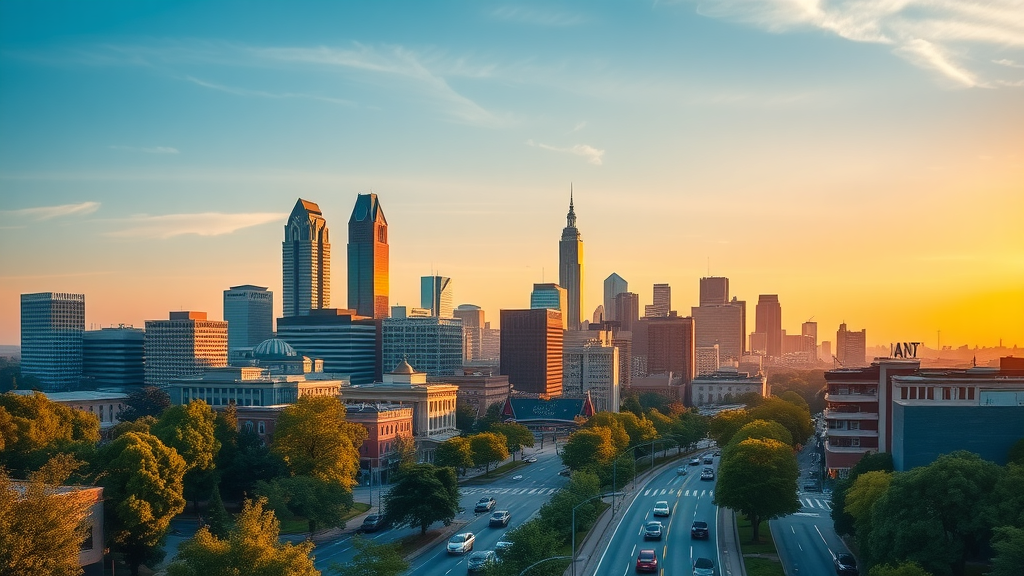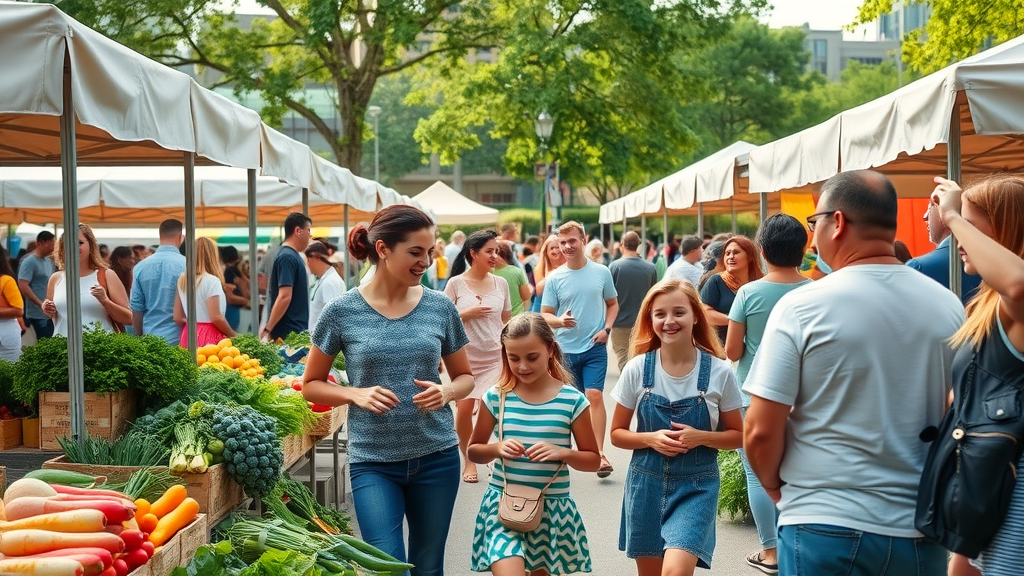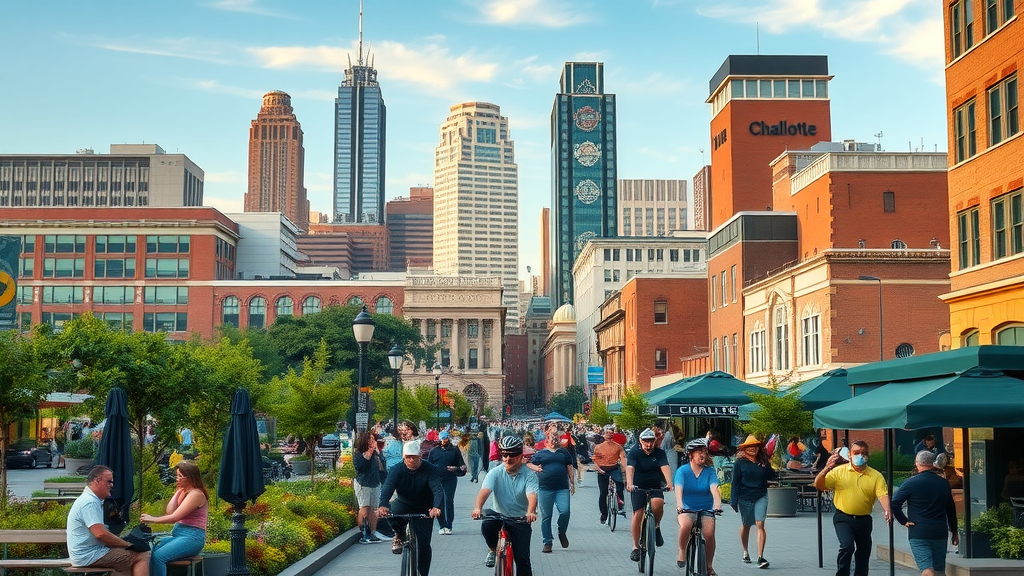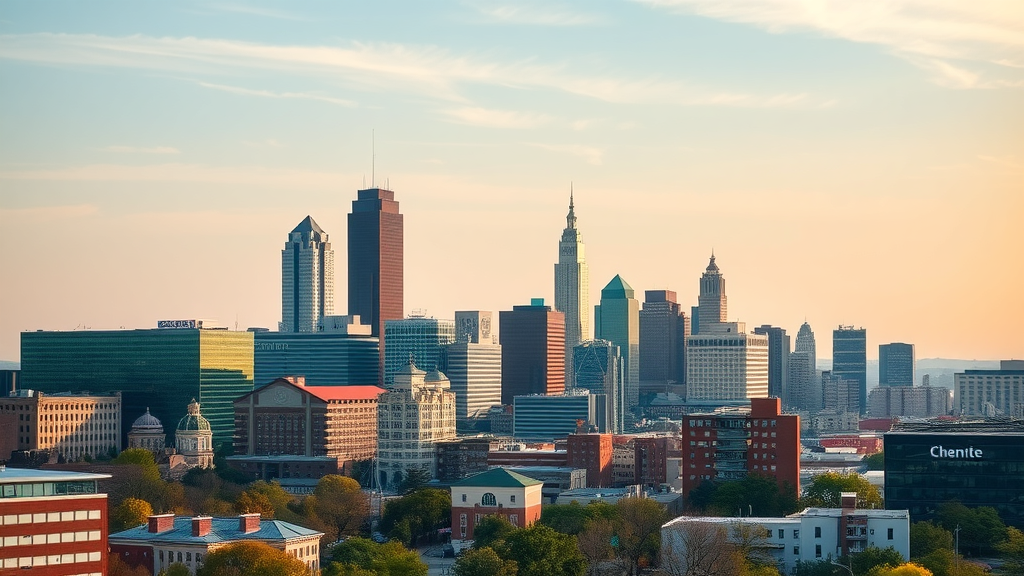Did you know over 150,000 new faces have joined the Queen City in the past decade, redefining Charlotte urban living and transforming pockets of the city into bustling hubs? Whether you're searching for a new place to call home or simply curious about living in Charlotte, this feature digs deep into local trends, top neighborhoods, and the real stories behind the city’s booming appeal. Get ready to discover a side of Charlotte you might never have expected—one teeming with energy, growth, and urban opportunity.
- What you’ll gain from this article:
- Understanding Charlotte urban living from a local’s perspective
- Key data and stats about living in Charlotte
- First-hand takes on the best urban neighborhoods
- Insights into the Queen City’s evolving job market
- Guide to neighborhoods like Myers Park , South End , University City
- Real-life urban living stories
"In just the last decade, Charlotte has grown by over 150,000 new residents, transforming once-quiet neighborhoods into vibrant urban hubs. The city isn’t just growing; it’s redefining what it means to live in the Queen City."
Discover the Rise of Charlotte Urban Living: Surprising Trends and City Growth
Over the past several years, Charlotte urban living has exploded in popularity, drawing both seasoned locals and newcomers hungry for the Queen City’s signature blend of opportunity and charm. Driven by a thriving economy, cultural renaissance, and a sharp uptick in residents seeking the vibrancy of urban neighborhoods , the city has become one of North Carolina's fastest-growing destinations. The result is a cityscape that’s constantly evolving—historical mill warehouses now house hip breweries, former suburbs pulse with new high-rises, and leafy streets once dotted with family homes now offer stylish lofts and condos within walking distance of nightlife and employment.
This leap in population and amenities isn’t accidental. Companies like Bank of America anchor a robust job market , while the city’s expanding light rail and bike trails make commuting and leisure easier than ever. Charlotte offers a true urban lifestyle where residents enjoy access to art galleries, food halls like Optimist Hall, and flourishing green spaces. But with this growth also come new challenges: rising housing costs, denser traffic, and the pressure to create community amid so much change. Still, the rewards of living in Charlotte are profound—making it a place many now eagerly call home.

Why Charlotte Urban Living Appeals to Modern City Dwellers
Living in Charlotte: Embracing the Queen City’s Unique Vibe
There’s an unmistakable energy that pulses through living in Charlotte . From the moment you step onto the bustling sidewalks of Uptown Charlotte or sip coffee along tree-lined avenues in South End, the Queen City’s character reveals itself. People here value their work-life balance just as highly as the breadth of weekend adventures available—a rare combination that has helped make Charlotte a good place to call home . Urban living merges the convenience of city amenities with a neighborly warmth, so you’ll encounter rooftop yoga classes, spontaneous jazz shows in small clubs, and community art installations all seamlessly entwined within daily life.
What’s most captivating about the Queen City, though, is its spirit of inclusivity and renewal. Newcomers and long-time residents alike find space to build connections, whether it’s through volunteer programs, local festivals, or simply bonding over their favorite hidden dining spots. Charlotte's urban neighborhoods aren’t just places to live—they’re places to thrive, explore, and shape the city’s continually unfolding story. If you’re searching for a place to call home where ambition meets authenticity, Charlotte delivers on all fronts.
Live in Charlotte: Diversity, Opportunity, and Connectivity
The cultural fabric of living in Charlotte is woven from many threads—transplants from around the globe, startups bursting with creativity, and established families proud to be a part of Charlotte’s new era. The city actively embraces diversity, which is reflected in its globally inspired cuisine, thriving international festivals, and mosaic-like communities. Job seekers benefit from a job market that spans tech, healthcare, finance, and education, meaning there’s opportunity for almost every ambition or background.
One factor drawing so many to live in Charlotte is the sense of easy access —not just to career options in towering Uptown offices, but to miles of well-planned bike paths, parks, and waterfront escapes like the Whitewater Center. Add a continually expanding public transit system, and it’s easy to see why so many professionals—and their families—choose Charlotte’s urban neighborhoods as the ideal place to call home and write their next chapter.

Urban Neighborhood Evolution: Key Areas Reimagining Charlotte Urban Living
The heart of charlotte urban living beats most strongly in neighborhoods undergoing bold transformations. Old industrial spaces in South End have turned into design-forward apartments and co-working hubs, while once-sleepy districts like University City now buzz with youth and innovation, thanks in part to the proximity of UNC Charlotte and major hospitals. These communities are not just changing outwardly; the people who call these districts home are shaping dynamic, inclusive cultures—each one reflecting a unique attitude and approach to urban living .
As Charlotte races forward, housing options continue to multiply—ranging from classic family homes on large lots to high-rise flats optimized for every need and floor plan. The unifying thread? Walkable streets, access to art and food, and a commitment to sustaining green space even in the heart of the city. It’s these neighborhoods, constantly rethinking how a city should feel, that make Charlotte urban living worth exploring in person.
Charlotte’s Hottest Urban Neighborhoods for City Living
South End: The Epicenter of Trendy Charlotte Urban Living
If there’s one area that encapsulates the current craze for charlotte urban living , it’s South End. Once a gritty industrial corridor, it’s now home to vibrant art galleries, bustling breweries, and some of the city’s most desirable lofts and condos. Residents enjoy a unique blend of historical charm and undeniable trendiness—making South End the go-to destination for those craving proximity to both work and fun. Here, you’ll find the popular Rail Trail, brimming with bikers and joggers, and an endless stream of pop-up events that keep the neighborhood’s spirit alive.
The mix of hip eateries, eclectic boutiques, and easy access to Uptown make South End an urban neighborhood where weekend plans and weeknight drinks blend effortlessly. The housing landscape here is as diverse as its residents, with modern floor plans designed for singles and young families alike. If you’re looking to live in Charlotte and want to feel the city’s pulse at your doorstep, South End is, without question, the place to call home.
Myers Park: Classic Charm Meets Urban Living
For those who seek elegance alongside thriving urban living , Myers Park offers the perfect blend. This historic neighborhood is famed for its gracefully arching tree canopies, grand family homes, and stately brick manors. But Myers Park is more than a relic of Charlotte’s past—it’s a living, evolving community. Residents enjoy access to shaded greenways, chic boutiques, and fine dining, all nestled within one of the city’s most beloved settings. Myers Park has emerged as a beacon of what makes living in Charlotte both charming and forward-thinking.
In recent years, careful preservation teamed with innovative urban planning has amplified the neighborhood’s timeless appeal. The community enjoys a quiet, refined energy, making it ideal for families, professionals, and anyone seeking the tranquility of suburban living without giving up urban access. As one of Charlotte’s most coveted addresses, Myers Park invites you to experience a sophisticated side of city life—one where every day feels like coming home.

University City: Up-and-Coming Hub for Young Professionals
No discussion of urban neighborhoods in Charlotte is complete without mentioning University City . Long recognized for the presence of UNC Charlotte and bustling community college campuses, University City has quickly transformed into a lively hub favored by young professionals and students alike. Here, affordable apartments share space with lively brewpubs and trendy restaurants, all situated around vibrant shopping plazas and green spaces.
University City boasts easy access to both the city core and sprawling greenways, providing a way of life that’s rich in amenities without the price tag typical of Uptown. For people launching their careers and eager to live in Charlotte, University City offers a unique urban lifestyle—one where innovation meets comfort and where a vibrant, supportive community feels within reach for every newcomer.
Comparing Charlotte Urban Living with Other North Carolina Cities
| Charlotte | Raleigh | Durham | Greensboro | |
|---|---|---|---|---|
| Cost of Living | Moderate; rising rapidly | Moderate; slightly lower | Affordable | Most affordable |
| Average Commute Time | 24-28 mins | 22-25 mins | 20-25 mins | 18-22 mins |
| Nightlife | Vibrant, diverse | Trendy, thriving downtown | Eclectic and local | Quiet but growing |
| Green Space | Expansive and improving | Excellent park system | Historic and community parks | Family-friendly parks |
The Charlotte Job Market and Urban Living: Opportunities and Challenges
Queen City Job Market: Why More Professionals Want to Live in Charlotte
The strength of the Queen City’s job market is a magnet for talent from across North Carolina and beyond. Anchored by heavyweights like Bank of America, Wells Fargo, and booming health and tech sectors, Charlotte has consistently ranked as a top city for career growth. Economic expansion means more companies are searching for top-tier talent, and new industries—from fintech to research—are flocking to set up shop. This has made living in Charlotte synonymous with professional opportunity and economic mobility.
The city’s job market isn’t just about numbers; it’s about lifestyle. Flexible workspaces, growing co-working environments, and a supportive startup scene make it easier than ever for newcomers to plug into the city’s ambitious rhythm. If you’re envisioning a place to call home where your career and community grow side by side, urban living in Charlotte promises just that.

Living in Charlotte: Key Industries Fueling Urban Development
Charlotte urban living owes much of its dynamism to the city’s economic diversity. Financial giants like Bank of America have long been foundational, but over the last decade, healthcare, education, and tech startups have surged, bringing new faces and ideas to once-quiet parts of Charlotte. These industries not only fuel the city’s rapid growth but also directly shape the urban landscape—with new condos, office towers, and vibrant street-level retail making every urban neighborhood more dynamic.
From large-scale hospital systems to innovative food halls and microbreweries, the Queen City’s economic mix means residents benefit from steady job prospects and a lively local business scene. This convergence supports a lifestyle where urban living isn’t just about having a place to sleep—it’s about having a community, opportunity, and adventure all within walking distance.
"Charlotte isn’t a city where you just work—it’s a city where you thrive. The Queen City job market is vibrant and continues to attract top talent."
Daily Life in Charlotte Urban Living: Amenities, Culture, and Transportation
Urban Amenities: Parks, Events, and Charlotte’s Culinary Scene
One of the real joys of charlotte urban living lies in daily access to parks, live events, and an ever-expanding culinary scene. From morning yoga at Romare Bearden Park to Saturday afternoons spent browsing local farmers’ markets, residents enjoy countless ways to stay active, connect, and sample the best of North Carolina’s seasonal flavors. Foodies in Charlotte will find everything from street tacos to James Beard-nominated restaurants, and the city’s breweries and art galleries keep weekends interesting no matter your taste.
Charlotte neighborhood events—from block parties to vibrant music festivals—foster connection and create opportunities to meet neighbors and make new friends. The focus on community events and amenities helps make every urban neighborhood feel like a welcoming place to call home. And with so much green space worked into city planning, there’s always somewhere to relax, whether with family, friends, or four-legged companions.

Urban Living and Transit: Light Rail, Biking, and Walkability
For many, the best part of living in Charlotte is the easy access provided by modern transit options. The city’s expanding light rail line connects major urban neighborhoods, making it simple to commute or explore without relying on a car. Dedicated bike lanes and greenways wind through neighborhoods and parks, encouraging a healthy, eco-friendly lifestyle from Myers Park to University City and beyond.
Charlotte urban living is further enhanced by walkable streetscapes. Sidewalk cafés, plazas, and retail corridors are designed for pedestrians, so a night out or a quick grocery run can happen on foot. Thoughtful city planning ensures residents of every age and background enjoy the benefits of a vibrant urban neighborhood, no matter where they call home.
Why More People Choose to Live in Charlotte: Real Opinions and Stories
- Top features drawing people to Charlotte urban living:
- Vibrant downtown energy
- Rapid job growth
- Walkable neighborhoods
- Lively nightlife
- Community events
Talk to a handful of Charlotte residents and you’ll hear a recurring theme—urban living here is exciting, friendly, and always on the move. Many newcomers mention being drawn to the Queen City for its work opportunities but choosing to stay because of the sense of community and belonging. Seasoned locals proudly recall seeing Myers Park or South End grow from quiet streets to thriving destinations filled with art, innovation, and activity. Young professionals and families alike rave about the walkability, the variety of place to call home options, and how Charlotte offers something for everyone—from brewery crawls to river kayaking and everything in between.
Ultimately, it’s these stories, more than any statistics, that set Charlotte urban living apart. The Queen City isn’t just another dot on the map—it’s a destination for dreamers, movers, and believers in a bright, collective future.
The Challenges of Charlotte Urban Living: Costs, Growth Pains, and Solutions
Urban Neighborhood Affordability: Navigating Rent and Real Estate
As Charlotte’s popularity surges, so do its housing costs. What was once an affordable city compared to other metropolitan hubs is seeing rising rent and real estate prices—especially in highly sought-after neighborhoods like Myers Park and South End. For newcomers and long-time residents alike, finding a place to call home means navigating a market where demand often outpaces availability. New apartment complexes are popping up with ever-evolving floor plans, hoping to cater to diverse families and young professionals, but competition remains stiff.
Despite these challenges, Charlotte’s creative development strategies have helped maintain a range of housing options . From compact city studios to spacious family homes on the outskirts, there’s hope for everyone—including renters and buyers looking for a balance between price, amenities, and proximity to transit. Urban planners are investing in affordable housing solutions and green spaces, ensuring the Queen City remains a welcoming place for all.
Traffic & Infrastructure: Dealing with Rapid Urbanization
With growth comes the inevitable challenge of congestion and infrastructure strain. Urban development has led to crowded highways, increased commute times, and pressure on existing utilities and green spaces. However, Charlotte is actively investing in solutions: expanding the light rail, enhancing bus routes, and launching smart traffic systems—each designed to keep the city moving efficiently.
For those considering living in Charlotte, it’s important to embrace alternative transit options and stay connected with city initiatives. Community-driven planning sessions and investments in sustainable urban design aim to make Charlotte urban living not just possible but enjoyable for years to come.
"With great growth comes great challenge—Charlotte’s evolution means residents need to adapt while the city strengthens its infrastructure and housing options."
People Also Ask: Insights on Living in Charlotte Urban Living
Is Charlotte Considered a Good Place for Young Professionals?
Absolutely! Charlotte urban living stands out for its dynamic job market, vibrant entertainment options, and a welcoming community spirit—making it a top choice for ambitious young professionals seeking both career growth and quality of life. With diverse floor plans, walkable neighborhoods, and a nightlife that never sleeps, the Queen City is quickly becoming a preferred place to call home.
What Are the Best Urban Neighborhoods to Live in Charlotte?
South End, Myers Park, and University City are the standout choices for those eager to immerse themselves in Charlotte urban living. Each offers unique amenities and distinct personalities—from South End’s creative buzz and nightlife to Myers Park’s classic elegance and family-friendly charm, as well as University City’s affordability and youthful energy.
How Does the Cost of Charlotte Urban Living Compare to Other Major Cities?
While living in Charlotte was once considerably less expensive than other major metros, prices have risen steadily. Even so, compared to cities like Atlanta and Washington, D.C., Charlotte urban living still provides a balanced cost of living—especially considering the modern conveniences, job opportunities, and abundant green spaces the city offers.
Essential Tips for Embracing Charlotte Urban Living
- Explore diverse urban neighborhoods—each offers a different vibe and lifestyle.
- Leverage the Queen City’s expanding public transit options for stress-free commuting.
- Get involved in local events and community organizations to build connections.
- Stay informed on housing market trends and keep your options open.
Top 5 must-see spots in Charlotte urban living:
- Romare Bearden Park
- The Rail Trail in South End
- Levine Museum of the New South
- Optimist Hall
- The Whitewater Center

Frequently Asked Questions about Charlotte Urban Living
-
Is Charlotte a walkable city?
Yes, many of Charlotte’s urban neighborhoods such as South End, Uptown, and NoDa are exceptionally walkable, filled with cafés, art galleries, and retail options within easy reach. The city continues to improve walkability with new sidewalks, greenways, and pedestrian-friendly developments.
-
What’s the average rent in Charlotte’s urban neighborhoods?
As of 2024, the average rent for a one-bedroom apartment in central Charlotte ranges from $1,400 to $1,900 per month, depending on the neighborhood and amenities. Popular urban living areas like South End and Uptown trend toward the higher end, while University City offers more affordable options.
-
Are there green spaces for families and pets within the city?
Absolutely! Charlotte boasts numerous parks, greenways, and recreational spaces perfect for families and pets. Iconic areas like Freedom Park, Frazier Park, and the Rail Trail weave nature right into the urban fabric.
A Personal Reflection on Embracing Charlotte Urban Living
"As someone who’s watched Charlotte transform over the years, I can say this: charlotte urban living isn’t just an address—it’s a lifestyle packed with promise, challenge, and endless excitement."
 Add Row
Add Row  Add
Add 




Write A Comment